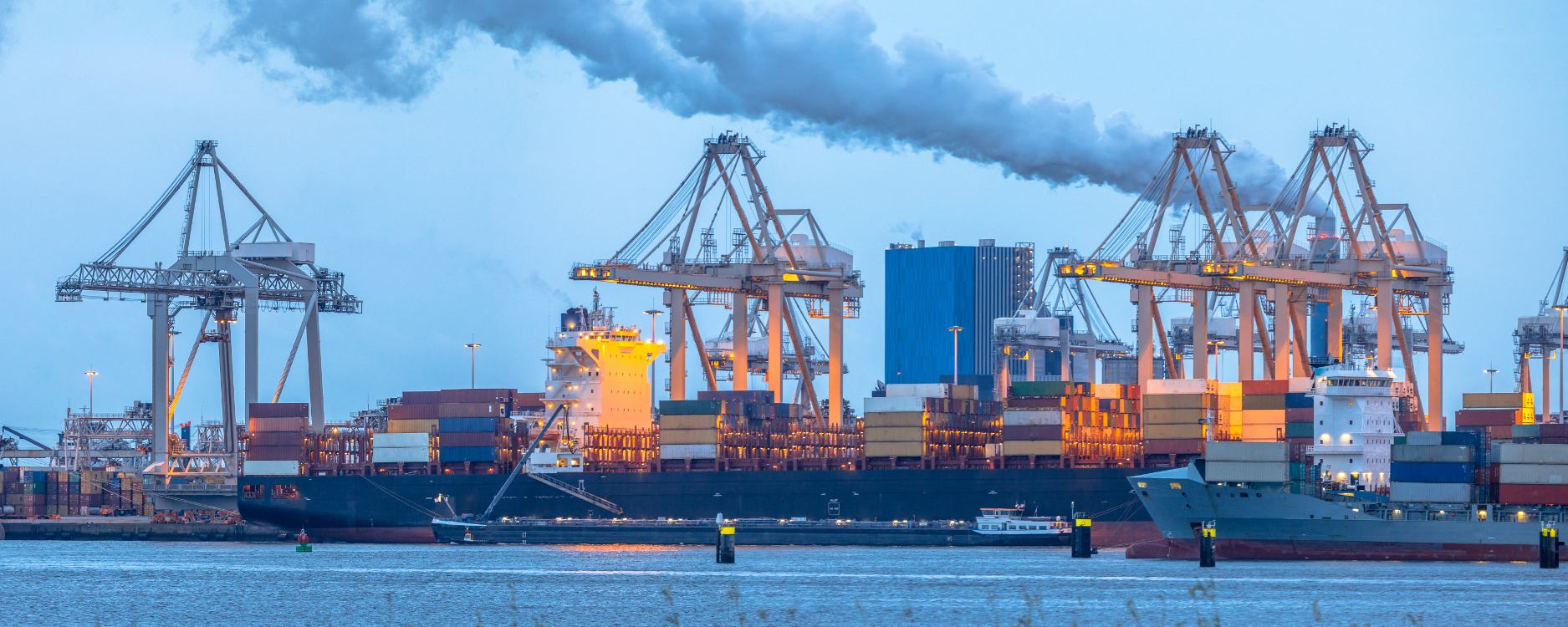Making a Green Shipping Industry

The modern shipping industry has been around for decades, and the way we move large containers from one location to another hasn’t changed much. This means that there are still a lot of gas emissions and other pollutants going up into the air and down into the water from the large shipping vessels cruising the ocean and the diesel fueled trucks driving down the highway. So how can the shipping industry pave a new path to a greener way of moving cargo? There are a few things that the industry can do to keep itself competitive and attractive to those needing to transport goods while also changing to green shipping practices. Let’s take a look at some of these potential changes, which have already started being implemented in some locations.
The Problem with Shipping
People and businesses are becoming more environmentally aware every year, and the current shipping industry needs to make some large changes to stay up-to-date. The low grade marine fuel used to move large shipping vessels across the sea has more than 3,500 times the sulfur in it than road diesel. Particulates emitted from these ships, whether sitting at ports or out on the open water, are estimated to cause more than 60,000 cardiopulmonary and lung cancer deaths worldwide each year.
Along with adding to air pollution, there’s a problem with expanding the ports and harbors to house even larger cargo ships. This destroys local coastal ecosystems, causing problems not only for the local wildlife, but also the people who depend on fishing to survive. This means that the local areas these vessels help support by adding jobs will also destroy the very place these workers call home.
So how can the shipping industry go green with these large numbers of pollutants hanging around them?
Cleaning Up Ship Scrapping
Taking large ships apart causes a lot of extra pollution during the process, and any parts that aren’t recycled create huge amounts of landfill debris. In 2009, the International Maritime Organization (IMO) adopted the Hong Kong International Convention for the Safe and Environmentally Sound Recycling of Ships. The countries so far that have adhered to these cleaner standards include Norway, the Congo, and France. As more countries adopt these greener standards, the more we will see cleaner ways of scrapping ships. The principal scrappers in Bangladesh, India, and Pakistan need to be monitored by the IMO going forward, to make sure they too are adhering to these guidelines.
It would be best if countries around the world set up a list of standards to follow, in addition to collecting data for each location. Doing this would ensure that scrapping is being done to greener standards and that guidelines are being followed. International loan and other aid programs could demand clean ship-scrapping practices as incentive to qualify for their aid. A watch list could also be created to monitor the countries that practice unsafe ship scrapping with a list that’s constantly updated. If countries know their unsafe practices are being monitored, they will be more likely to make the changes for the betterment of the water, the air, and their people.
Controlling Emissions
There needs to be stricter IMO emission regulations in place. This includes a cleaner worldwide standard for the sulfur that’s released by combustion of marine fuel. How can this be done? When oil prices are low, it creates a great opportunity for these stricter standards to be established.
Marine fuel accounts for only 2 to 4% of the oil industry’s market. Putting stricter emissions standards in place will help drive the demand for higher quality fuel. There would need to be some incentive programs put into place for less developed countries that will help them offset the initial high cost of investment, especially in locations where there is little capacity for this change.
An alternative to higher quality fuel would be to install scrubbers in the fuel tanks of the ships. These scrubbers combine the fuel with water or caustic soda to help remove up to 99% of particulate matter from the high sulfur fuel. These scrubbers are expensive, costing around 2 million dollars per ship. However, if the shipping companies were offered subsidies for up to 50% of the cost, they would likely recoup the other 50% in savings on fuel alone.
Improving Port Management
One more step that the industry could take to improve green shipping is to get a better handle on the management of the ports. To accomplish this, the port authorities should review the overall environmental impact of their previous constructions. Once this is done, they should then disclose their future development plans to demonstrate a responsible management of public assets. To even further the advancement of going green, the port authorities should coordinate with transport-planning bureaus to help find the most economical and environmentally friendly way to transport goods. Keeping the port authorities working with local industries to build more eco-friendly harbors would greatly improve relations with locals and keep management more accountable.
With the world turning towards greener practices overall, the shipping industry has some changes to make in the near future. By focusing on cleaning up emissions, improving port design, and turning to cleaner scrapping methods, great strides can be taken over the coming years. If these changes are put into place, it will be a huge benefit to the environment. Green shipping can help provide a cleaner future for all of us!
[bctt tweet="Green shipping can help provide a cleaner future for all of us!"]
Want to learn about a different kind of green shipping container? Check out these shipping container farms!
